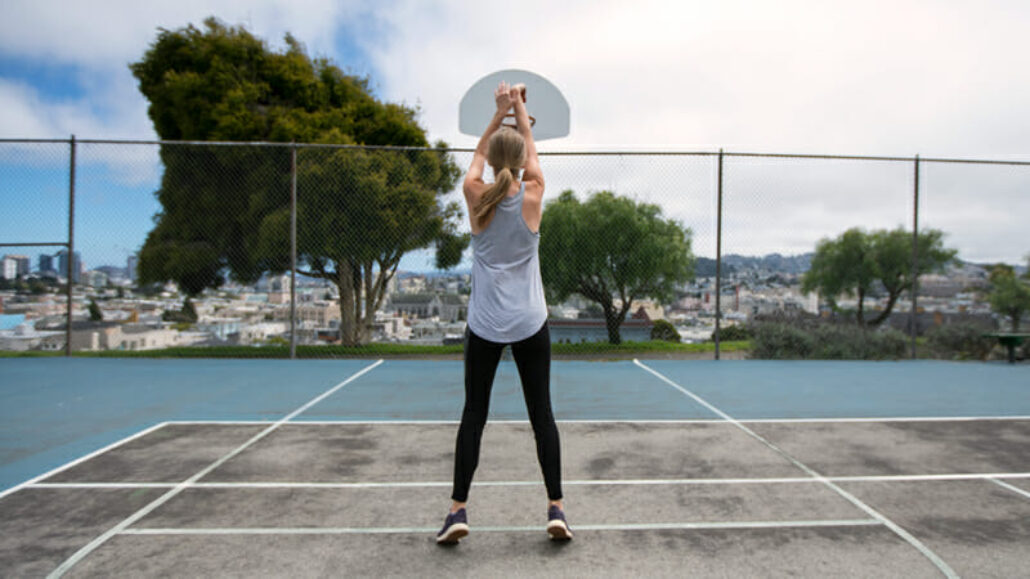Tips every basketball player should know about how to prevent ankle sprains.
In the hustle and jostle of a friendly game of basketball, no one wants to land the wrong way and sprain an ankle. But ankle sprains are one of the most common basketball injuries. Sports medicine physician Dr. Angela Voight explains what happens when this injury occurs. And she’s got tips to help you prevent ankle sprains. If the worst happens and you do sprain an ankle, she also reviews sprain treatments.
How a sprain affects the ankle
“With ankle sprains, it’s usually the ligaments on the outside of the ankle that are injured,” explains Dr. Voight. “You come down awkwardly from a jump and twist your ankle as you land. The ankle ligaments stretch and become damaged. If the twisting is severe enough, you can actually tear ligaments.”
“Ankle sprains are a risk for anyone who plays basketball because you are jumping and running so much,” states Dr. Voight. “Jumping, landing, and even running quickly or placing your foot incorrectly can injure the ankle and cause a sprain. Although ankle injuries are common among basketball players, there are things you can do to prevent ankle sprains.”
Steps you can take to prevent ankle sprains
“There’s no way to absolutely avoid all injuries,” admits Dr. Voight. “But there are steps you can take to lower your risks.”
- Exercise regularly. “I always tell people that if you aren’t doing some type of exercise to improve strength and balance, you can’t expect to stay injury-free. Neuromuscular strength coordination training helps a lot. If you don’t exercise, it is going to catch up with you.
- Avoid recurring injuries. “Once you’ve suffered an ankle or knee injury, you are frequently at higher risk for injury recurrence,” notes Dr. Voight. “However, there is research that tells us how to lower recurrence risks, especially for ankle injuries. In basketball, ankle taping or bracing can prevent a second injury after you’ve been injured a first time. Working with a physical therapist or an athletic trainer to improve lower extremity strength and balance also helps prevent recurrence.
Symptoms of an ankle sprain
Even the best of preventive intentions can’t ward off every injury. “If you do sprain your ankle, you’ll know,” says Dr. Voight.
- “If you land the wrong way and feel the ankle twist and give out, you’ll feel pain within the first minute. And that pain tends to increase over the first several minutes.
- Following a sprain, there is often swelling on the outside of the ankle. Some swelling will occur right away, but it may also gradually increase later that day or into the next day.
- Difficulty with walking. If your ankle feels unstable or is not able to bear weight, you may have a sprained ankle.
What to do when your best efforts don’t prevent ankle sprains
“If you think you’ve sprained your ankle and have pain with weight-bearing, get off the ankle,” advises Dr. Voight. “Elevate the injured ankle immediately and use ice to help with swelling and pain. If you don’t have a medical condition—like stomach or kidney issues—that precludes use anti-inflammatory medications, these medications are another option to treat pain and swelling. You could also use an Ace wrap to help with the swelling. A minor sprain will improve with no more than a week of reduced activity.”
If pain does not improve within a week, it’s time to be evaluated. “Continued pain could be a symptom of a fracture or more severe sprain,” explains Dr. Voight. “And if you don’t treat a fracture promptly, it may not heal well. This could cause difficulties with treatment in the future.”
Reducing risks of future ankle sprains
Even if your sprain is minor, it might be worth seeing a physical therapist or performance specialist for strengthening exercises. Strengthening and range of motion exercise can help you recover faster. And because one ankle sprain makes you more susceptible to recurrent sprains, an exercise program will help you prevent ankle sprains in the future.
What research tells us about how to prevent recurring sprains
Studies tell us that people who have had a sprain are more likely to have another one,” notes Dr. Voight. “You may be surprised to learn that susceptibility to a recurrent injury continues for a few years. That’s why an exercise program designed to strengthen and regain normal balance and motion is so important. You can also use bracing or taping during athletic activities to protect your ankle. Bracing and taping can be helpful for up to two years following a sprain. You don’t need to tape or brace for all activities, but it can be helpful during athletic activities. These steps can’t prevent recurrence, but they have been shown to decrease the risk of another sprain.”
Conditioning may be the best way to prevent injuries
“Whether or not you are a recreational athlete, maintaining good strength, coordination, and balance is always a benefit,” concludes Dr. Voight. “This conditioning helps in daily life as well as in recreational athletic activities. When you exercise regularly and maintain good muscle condition, you are less likely to injure yourself. I think regular exercise is especially important as people are choosing to stay more active as they age. A good overall level of fitness can help to decrease the risk of injuries in the first place—and reduce the likelihood of recurrent injuries.”
Summit Orthopedics offers comprehensive sports medicine expertise
From Olympians to pro athletes to kids in youth sports and those who just want to be more active—Summit Orthopedics delivers expert care by fellowship-trained sports medicine physicians. If you are recently injured or concerned about ongoing pain, Summit Orthopedics sports medicine specialists have the expertise to evaluate your discomfort and develop a plan to quickly and safely help you get back to being active.
Start your journey to stronger, healthier athletic condition. Find your sports medicine expert, request an appointment online, or call us at (651) 968-5201 to schedule a sports medicine consultation.
Summit has convenient locations across the Minneapolis-St. Paul metro area, serving Minnesota and western Wisconsin. We have state-of-the-art centers for comprehensive orthopedic care in Eagan, MN, Plymouth, MN, Vadnais Heights, MN, and Woodbury, MN, as well as additional community clinics throughout the metro and southern Minnesota.

